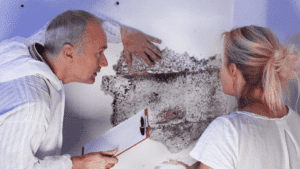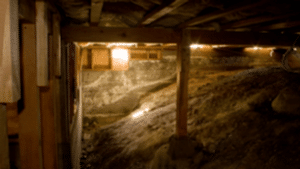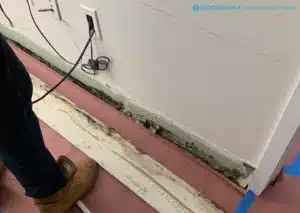
A Comprehensive Guide to Identifying Common Mold in Your Home or Business
Mold is more than a nuisance. It’s damaging to your property and can even affect your health.
As mold occurs in any damp or humid setting at any time of the year (yes, even the middle of winter), it’s a concern for coastal communities. If you live or own a business in cities like Hoboken, Edgewater, Jersey City, Bayonne, and Manhattan, then your property is at a greater risk of water damage.
When homes and businesses suffer water damage from floods, leaky pipes, faulty appliances, or clogged drains and gutters, mold growth soon follows.
Since mold is a concern for your property (and your well being). It’s important for you to know what the different types of common mold looks like. Being able to recognize the most common types of mold lets you assess your risk level and take action. This is important as some mold types are more harmful to your health than others.
In the following article, we’ll:
- Describe the common mold types.
- Explain what causes their growth.
- Highlight the areas of a property where they’re typically found.
- Provide information about any possible health risks they impose.
Common Mold Types 101
Not all mold looks the same. Some types are more easily noticeable than others. Many mold types are easily removed, while others require more specialized techniques. And exposure to some mold is dangerous.
To help you protect your property and your well being, we’ve outlined the six most common types of mold that occurs after water damage:
Cladosporium
Cladosporium is easy to identify for a couple of reasons. First, it’s mostly olive green in color. Second, it has a velvety texture.
Although growth starts as small specks, those little spores quickly grow, spread and become larger patches. So the sooner you can remove this mold, the better.
Unlike a lot of other mold, cladosporium tends to affect only one area of a property: the bathroom. It thrives on the humidity found in bathrooms and tends to prefer areas near faucets. However, cladosporium can grow, spread and thrive on walls, flooring and carpeting.
As cladosporium is an allergenic mold, it can lead to respiratory illness and conditions if left untreated.
Chaetomium
Chaetomium is often found in structures impacted by severe water damage such as flooding.
Sometimes hard to spot during the early growth cycle as it’s mostly white in appearance. Over time, its cotton-like texture becomes more prominent and its color changes to gray then black. In addition to its color and texture changes, chaetomium also develops a very musty odor.
Although chaetomium doesn’t cause respiratory problems, it may cause skin or nail infections if handled without proper protective gear.
Alternaria
Much like cladosporium, alternia mainly affects bathrooms and other areas with humidity and water sources.
While alternia also has a velvety texture (also similar to cladosporium), it’s black in color. It’s also identifiable by the green or brown hair-like fibers that protrude from its patches.
The two biggest concerns with this allergenic mold are its ability to grow and spread rapidly, and cause respiratory issues. Exposure to cladosporium can cause coughing, eye irritation and even asthma-like symptoms.
If you suspect alternia growth in your property, you should have it professionally removed as soon as possible.
Aureobasidium
One thing that makes aureobasidium unique is its preference for growing on wood. You’ll often find this mold on baseboards, trim, tables, paneling, wainscotting and any wooden surfaces damaged by flooding or water.
While aureobasidium starts off pink in color, it quickly turns brown or black as it grows and spreads beyond wooden surfaces.
Another allergenic mold, aureobasidium is known to cause eye, skin and nail infections if not handled correctly.
Aspergillus
Aspergillus is one of the most common mold types found in water damaged properties.
Unfortunately, it’s also one of the most dangerous.
Often found on walls in water-damaged rooms, aspergillus is typically black with hints of white or yellow throughout its large patches.
Not only is aspergillus highly allergenic, it’s also toxic. Exposure to this mold type often results in aspergillosis. These distinct diseases can lead to such serious medical conditions as lung and respiratory infections.
Stachybotrys
Perhaps the most dangerous of all common molds, stachybotrys are highly toxic.
Stachybotrys’ slimy texture and pitch black color make it easy to spot in damp and humid areas (such as properties impacted by flooding).
It’s imperative to remove stachybotrys immediately. If left untreated, exposure to this toxic mold can lead to an array of serious health issues such as nasal and chest congestion, chest tightness, severe headaches, fainting, sleeplessness, fatigue, brain fog, and more.
Take Action and Remove Mold Immediately
Mold after water damage is a serious problem for Gold Coast communities. That’s why it always helps to be aware of the many mold types that commonly grow after floods and other water-related issues.
If you suspect any of the above mold types in your property, you need to take action right away. The more time you wait to address mold growth, the greater the risk to you and your property.
The certified technicians at FloodCo USA have the knowledge, skills and resources to effectively identify and remove mold. Plus, they can take measures to reduce the risk of continued mold growth in your water-damaged property.
Contact us today to learn more about our professional mold removal services!



